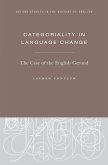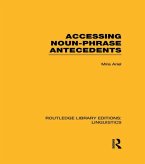Language Between Description and Prescription is an empirical, quantitative and qualitative study of nineteenth-century English grammar writing, and of nineteenth-century language change. Based on 258 grammar books from Britain and North America, the book investigates whether grammar writers of the time noticed the language changing around them, and how they reacted. In particular, Lieselotte Anderwald demonstrates that not all features undergoing change were noticed in the first place, those that were noticed were not necessarily criticized, and some recessive features were not upheld as correct. The features investigated come from the verb phrase and include in particular variable past tense forms, which -although noticed-often went uncommented, and where variation was acknowledged; the decline of the be-perfect, where the older form (the be-perfect) was criticized emphatically, and corrected; the rise of the progressive, which was embraced enthusiastically, and which was even upheld as a symbol of national superiority, at least in Britain; the rise of the progressive passive, which was one of the most violently hated constructions of the time, and the rise of the get-passive, which was only rarely commented on, and even more rarely in negative terms. Throughout the book, nineteenth-century grammarians are given a voice, and the discussions in grammar books of the time are portrayed. The book's quantitative approach makes it possible to examine majority and minority positions in the discourse community of nineteenth-century grammar writers, and the changes in accepted opinion over time. The terms of the debate are also investigated, and linked to the wider cultural climate of the time. Although grammar writing in the nineteenth century was very openly prescriptivist, the studies in this book show that many prescriptive dicta contained interesting grains of descriptive detail, and that eventually prescriptivism had only a small-scale, short-term effect on the actual language used.
Dieser Download kann aus rechtlichen Gründen nur mit Rechnungsadresse in A, B, BG, CY, CZ, D, DK, EW, E, FIN, F, GR, HR, H, IRL, I, LT, L, LR, M, NL, PL, P, R, S, SLO, SK ausgeliefert werden.









